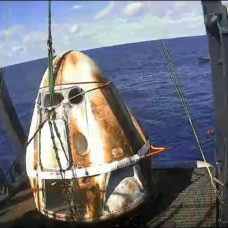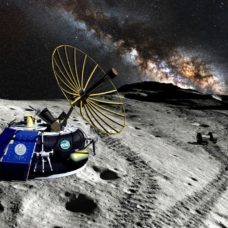NASA is considering an interstellar mission to Alpha Centauri in 2069, coinciding with the 100th anniversary of Apollo 11.
Located 1.34 parsecs from Earth (about 25 trillion miles), the Alpha Centauri (α Cen) system consists of two stars, Centauri A, Centauri B and a red dwarf, Centauri C (aka Proxima Centauri).
Our nearest solar system, Alpha Centauri, may be our first interstellar destination as NASA is reportedly planning to launch a probe to the nearby system to look for alien life.
NASA planning an interstellar mission to Alpha Centauri by 2069.Click To TweetAfter the Moon (and Mars), Destination: Alpha Centauri
Getting to the moon has always been a dream for humanity which finally came true 48 years ago with NASA’s Apollo 11 mission. Although this was only humanity’s first small step on the long road towards inter-stellar travel, it was certainly a giant leap in the right direction.
After the end of the Apollo program in 1972, we never set foot back again on Earth’s sole satellite. Ever since the end of these missions, Mars has largely been the prime focus of both the media and the scientific community as our next destination.
However, getting to the moon is back on NASA’s to-do list, with a push from the American government and the nomination of U.S. Representative Jim Bridenstine as head of the agency who has his own reasons as to why revisiting the moon matters.
Now, according to a report, NASA is in the early stages of planning an interstellar mission to Alpha Centauri, just not before 2069.
Pegged to coincide with the 100th anniversary of the Apollo 11 mission, the still-unnamed project was presented by NASA JPL’s Anthony Freeman at the AGU 2017 (American Geophysical Union) which took place on December 12th in New Orleans, Louisiana.
In order to achieve this, NASA would develop an interstellar probe based on a new propulsion system that could reach a speed equivalent to about 10% of light speed.
At one-tenth the speed of light, NASA’s tentative mission would take about 44 years to reach Alpha Centauri (if everything goes as planned).
That’s not anywhere near faster than light travel, but it is still an interesting concept. For example, Voyager 1, which is speeding through interstellar space at about 30,000 mph, would reach the system within 80,000 years.
Alpha Centauri, the Next “Mars”?
This isn’t NASA’s first project dedicated to Alpha Centauri.
Back in the 1980s, the Longshot Project was a conceptual research program, conducted by the space agency in collaboration with the U.S. Naval Academy, aimed at sending an unmanned probe to explore this star system.
NASA isn’t the only organization interested in Alpha Centauri either.
Along with Mark Zuckerberg and Stephen Hawking, Russian billionaire Youri Milner is backing the Starshot Breakthrough project, which has also set the next-door solar system as its destination.
https://youtu.be/jM0ShBdVUhk
To ensure our survival, Stephen Hawking, along with other members of the scientific community, has nihilistically urged humanity to find a new planet to call home.
According to Hawking, we have around 100 years until it’s too late. Other than Mars, Alpha Centauri could also be a potential candidate for colonization, although its long distance from us may be a compromising issue.
According to recent studies, Alpha Centauri is home to at least one rocky planet. Last year, the discovery of an Earth-like planet, Proxima B, orbiting Proxima Centauri, sparked a new interest in the Alpha Centauri system.
Using new ways to search for habitable planets, scientists at Yale University suggest the existence of many other rocky, Earth-like planets in the Alpha Centauri star system.


















But does this interstellar mission really have to wait so long? Any chance of producing a craft with a constant 1g acceleration? Could the interstellar craft be ready for launch sooner than we think? If they can’t do it now then I think there is a 50% chance that they won’t do it at all.
@JeremyKeller9
Please follow me on Twitter.
My BBC link is about Olympus Mons. You should also be able to find them both on Google just by searching for Keller BBC or BBC Keller.